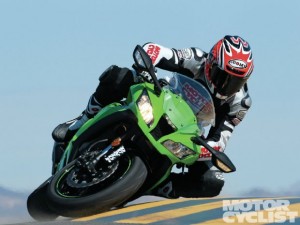
Is it possible to not crash when you experience a front tire slide? Maybe.
Both of my recent track crashes were the result of a sliding front tire (both were caused by me asking too much of a cold front tire). Sometimes it happens too quickly for you to respond. But, sometimes there is enough time to perform a maneuver that just may save you from a fall.
Survival Instincts Are a Bitch
Let’s say you are rounding a curve and the handlebar starts to feel vague in your hands. At the same time, your proprioceptors (aka kinesthetic sense) tell your brain that balance is being compromised.
Your brain is alerted to the threat and triggers your muscles to tense. The rush of panic and muscle tension happens in an instant. Many riders end up on the ground because their survival instincts cause them to overreact and make matters worse.
Saving the Front in a Corner
I’ve got bad news for you, that vagueness you feel at the handlebars is your front tire losing traction. This is bad, because a front tire slide is one of the most difficult situations to recover from. When cornering, the front tire is responsible for both lateral grip and direction control (steering). More times than not, front tire traction loss is the result of asking too much of the tire. Side forces from cornering, in combination with cold rubber and perhaps contaminated pavement is an easy recipe for tire slip.
When the front tire loses grip, it “tucks” underneath the bike and throws the bike and rider violently to the ground. But, is it possible to save yourself from falling?
To help the front tire regain traction (or at least not lose any more grip) you must first not add to the problem. This means staying relaxed (Good luck with that). With light handlebar pressure, the tire and suspension can work fluidly to manage surface irregularities.
If you tense on the bars, you will put stress on the front tire and risk pushing the tire over the limit of grip. Whatever you do, avoid trying to countersteer the bike into a deeper lean.
Assuming you can remain somewhat relaxed and neutral, the next thing to do is to relieve the work the front tire is doing. To do this, get on the throttle! I know, it’s counter-intuitive, which is why it’s not easy to do. But gassing it transfers load from the overworked front tire to the rear tire.This allows the front rubber to halt its lateral slide and keep rolling.
Yes, you will probably run wide, but hopefully you have enough road/track to let this happen. You can minimize this drift by using moderate throttle application to save the front tire slide. Just don’t goose the throttle so hard that you careen off the road or track or spin the rear tire.
Uphill Unload
A fellow instructor pointed out a caveat to the common cornering situation. Dan mentioned what can happen to traction when you are going uphill. He witnessed a fellow rider (with a passenger) lose the front and crash in front of him just as the crashing rider was getting on the gas. Why would this happen if what I say about relieving stress on the front tire is true?
The likely explanation is that the uphill slope, in combination with the weight of a passenger and the application of a bit too much throttle, unloaded the front tire too much. He probably also added a bit of steering input that tucked the front tire beneath him. The lesson is that load management and traction management go hand in hand and you need to develop a keen sense of how various factors can affect tire load and grip.
The Knee Save
For those who are accustomed to dragging knee, it is possible to relieve front tire stress by levering the bike with your knee. Anything you can do to take pressure off the front tire will help the tire regain grip.
Saving the Front While Braking
The other way to experience a front tire induced crash is to overbrake so you skid the front tire. This can happen whether you are upright or leaned. If this happens, get off the brake, NOW! This will let the front wheel roll again so you can regain control. Then get back on the brakes (you were braking for a reason, right?). But, this time squeeze the front brake progressively. You can still brake really hard (less so if you are leaned), but it must be done gradually to allow time to put load on the front tire, which increases traction.
Practice? Really?
It takes a good amount of skill and presence to control front tire skids. Like all other tricky situations, practice and experience increases the chance that you can act correctly and save a crash. Practice? How? Ride in the dirt, my friend! Pushing the front tire is a regular occurrence when riding on loose surfaces. Learning to control slides in the dirt is less risky than suddenly needing to manage a slide on your street bike. With this experience, you can train and condition your mind and muscles to react properly when a slide happens.
The other way to train yourself to react properly is to push your bike hard enough to get it to happen. I don’t recommend this, because front tire slides can easily go wrong. But, if you eventually go fast enough at track days or when racing, you will inevitably experience the vague feeling of your front tire on the edge of traction loss.
DO NOT go fast enough to slide the front on the street!! You will die. On the street, it’s not likely that you will have enough time or space to pull off this hero maneuver.
What? You don’t ride on the track or in the dirt? Well, the next best way to practice is to visualize successfully performing the maneuver. Imagine yourself cornering hard, feeling handlebar vagueness and then gradually rolling on the throttle as needed to drift the front. It’s not ideal, but it’s the best way to prepare for saving a front tire slide.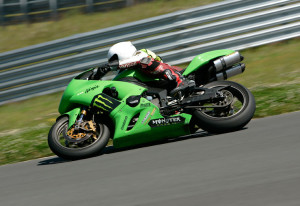
Expect It
Another way to prepare for front tire slides (and many others) is to expect them to happen. This pertains to all times when you are in traction-reduced situations, including when cornering or braking hard.
Have you experienced a front tire skid or slide? If so, how did that work out for you?
Please Donate to Keep the Articles Coming
If you liked this article and the many other articles on this site, please toss a buck or five into the hat. It’s greatly appreciated!
- Click the PayPal “Pay Now” button.
- Then indicate quantity in $2.00 increments. – Example: put “2” in “QUANTITY” field to donate $4.00, “3” for a $6.00 donation, etc.
Why $2.00? Due to the PayPal fee structure, a $2.00 donation is significantly more beneficial compared to a $1.00 donation.
Thank You!
Check out these posts:
- Product Review: TCX X-Desert Boots
- Get Anxiety & Stress Under Control (Motorcyclist)
- KLX250s Upgraded and Accessorized
- Street Triple R Gets Accessorized
- Triumph Street Triple R Review
- How To Survive Mid-Corner Hazards
- #1 Reason for Motorcycle Crashes in Corners
How Can I help You? Online Coaching NOW AVAILABLE
Stay Informed: Subscribe NOW!
 Be a Better Rider: Sign Up for Personal Training with Ken
Be a Better Rider: Sign Up for Personal Training with Ken
Support Riding in the Zone: Buy a book
Support Riding in the Zone: Buy products from Twisted Throttle & Amazon
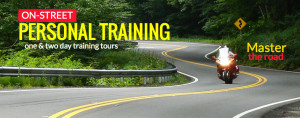
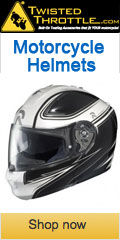
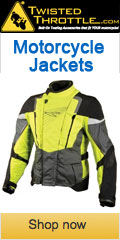

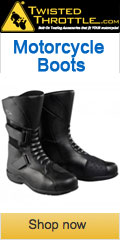
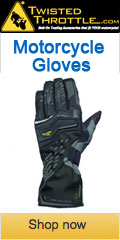



Ken:
Your advice on saving a front tire slide brought back memories of the one time I lost the front on the street. I had stopped by a friend’s garage that morning and found to my surprise that by his gauge, my front tire was about ten pounds low. Accordingly, I aired it up, and then went just a little higher than normal in case I was losing air. Later that day, as we were playing (admittedly, way too fast) in the Georgia mountains, I pitched the bike (not smoothly) into a hard left, and felt the sick sensation of my arms getting longer and longer as they tried to hang onto the handlebars, which in turn were rapidly chasing the wheel off into the right-hand ditch. The bike low-sided with minimal damage, but I tumbled ground-sky-ground-sky and received 7 broken ribs and a badly dislocated thumb. A month later, when I was able to hobble out to the garage and survey the damage, I measured my front tire to see how much air it might have lost. To my surprise, it read “47 psi” on my own gauge. Lesson learned: (other than not to ride like a squid just because the rest of the group is)– don’t trust a friend’s tire gauge if it gives an unexpected reading. Second lesson learned: “Slow in; out with a grin!”
Thanks for the comment, Pete. Sorry to hear about your crash. I tend to get street pressures in the ballpark and then ride well within the limits of the tires when on the street. (I know you do too).
I learned from riding on the racetrack just how important tire pressures are when cornering hard and fast. A few pounds can be the difference between a harmless slide and being tossed hard on the ground.
I just learned about a “front tuck” right after I saw you (Ken) w/TTD’s at NJMP last year. I went in harder and faster than normal into the long right hander near the houses (T8). It felt wonderful and I was way too comfortable obviously…I didn’t slow down at all. I went into the turn at the exact same speed that I approached it and tried compensating by getting further off the bike prior to tip in. Also, I Maintained throttle probably too far into the turn, after reading your article I’m thinking I probably wAited too long to get back on the throttle (hmmm). Everything happened so fast, I didn’t even get a chance to feel anything but the concrete and my lil body being bounced around across the asphalt, rumple strips and eventually the grass. My bike just low-sided and slid straight, so that’s how I figured out I didn’t get on the throttle too much. I simply didn’t get on it fast enough. My lil knee wasn’t holding me nor that 400 lbs bike of mine up Neither. My lil knee did absolutely nothing but make sure that I was on the ground completely 100%(lol). I came out ok everything in 1 piece but my bike was damaged more than I thought. I bent the rim and the forks, grounded down my clip-Ons, my pipe suffered a big ole hole and my first race was pushed all the way to 2014. Everything for a reason. 😉
I learned and chalked it up to “more gas-less brake…LESS BRAKE SJ! Not NO BRAKE at all” and if you go in hotter (on the track) you have to apply throttle faster than normal. Everything accelerates with acceleration EVERYTHING! Thanks for the lessons Ken. – SJ
On a bumpy road outside Brno, not going that fast or anything like 90kmph, but if somebody has ever been to Czech rep. you know how shitty our roads are 🙂 The front tucked in quite hard on a right hand 45deg curve, my arms were almost straight, but I stayed relaxed (there was nothing I could do really it happened so damn fast), throttle steady (better than roll off for sure) and I rode it out.
Next time I went through there much much slower, it seems there is one really bad bumpy line but not easily spottable. I think that I did not expect it and it happened so damn fast saved me. There was simply no time for panic in which case I would probably rolled of the throttle or did some other stupid thing. Also good tyres help a lot! (Michelin PilotRoad 2)
I experienced this the last ride before the weather got bad here in va. I was doing my normal runs through town and gassed it hard passing a bunch of people watching at this gas station. Had a pretty decent lean going but then I shifted to third as second was running out of steam. Felt the front completely lose traction but by the time I realized what was happening I was already in third and back on the gas so it corrected itself. Needless to say, my R6 has a brand new front tire on her now.
I have noticed that alot of times the best way to recover from something is to act like it didn’t just happen… or maybe my reaction is just too slow to do anything in time. Alot of my lucky saves though I think come from my 8 yrs of motocross and muscle memory.
Yes!This exactly.. just get back on the throttle and smile afterwards. I think overthinking things could be the no 1 sr!
Well said.
One of my multiple front wheel slides happened when I did not see it coming: at night, in the rain, I must have hit an oil patch or something. Before any technique was ready to apply itself, my instincts already got control and diminished the lateral forces on my front tire by reducing lean angle and speed. Without thinking, I eased off the gas and steered inwards, righting up my bike and widening my turn.
This same instinct saved me on numeral front end friction fails. Rear tire friction loss isn’t nearly as worrisome, and I would love an environment dedicated solely to front tire sliding…
Front tyre slide happens quite a bit with me.
The reason being is that its a fact of riding on these bad roads littered with potholes, diesel spills, oil spills, mud buildup, and various other factors that make anything other than riding straight lines bloody dangerous.
I ride to the limits of the road. That being looking out for other people, (in all guises, walking, day sleeping, driving, etc etc)…
…and looking out for the other aforementioned road factors at the same time…
… as well as looking out for speed cameras, coppers with guns, (the ones without bullets) deer, dogs, rabbits and most of all cows !
There !!!
I still get tyre slide and yes I’ve even locked the front wheel up on occasion in a straight line after missing the odd camera or two.
The main thing that keeps me from having a crash is my own riding technique…
All the advice is all well and good but none of it mentions your own centre of gravity on whatever you ride ???
I simply lean my bike and do not hang off the side to steer.
I’m not on a race track with sponsors that pay so I want to keep my self and my bike intact.
This generally keeps the bike below me to an extent and so aids balance. whatever angle you lean your bike, the centre of gravity will near enough always be central. This allows me more time to bring the bike back up in the event of a front wheel slide.
It does this in the same way a car slides out. The car slides on four wheels and does not turn over. The bike will slide in the same way as the balance is centred and so you and you bike will slide together and at the same angle for longer.
Simply easing off the throttle will bring it back up and hopefully if you have the room on the road will (this is the only drawback) bring you back to a safe position out of a slide.
I don’t try to slide but I do it quite often but at the same time reading the road conditions factor in some sort of get out plan directly in front of me.
I’ve taken the angle of the slide way past the tread pattern and managed to bring my bike back up again. This cannot be done it you decide to ride MotoGP stylee hanging off both sides when cornering.
The other option is to simply slow down but this is the most difficult thing in the world of motorcycling and takes miles and miles of experience to keep it borderline.
Keeping your wits about you at all times will keep you from crashing. Don’t read the bloody white lines, read the bloody road as white line are for idiots and people answering questions in a driving test.
I’m just bloody good at it and I still have my license albeit wearing my front tyre out on the sides before the centre wears out and its all down to your centre of gravity.
If you’re still crashing after reading and understanding this then you shouldn’t be riding at all as you are a danger to your self and also a danger to others, its two wheels for f”$$ sake and not on rails so don’t expect to be able to do the impossible.
Happy and safe riding.
Ps, happy and safe riding does not include abiding by the speed limits and sitting in traffic jams, you are allowed to go up kerbs and along paths, hard shoulders and no entry routes if it gets you out in front.
People like that should be banned for life
Wow Paul…so much passion. Thanks for sharing.
However, I am concerned for you since you say you slide the front tire often. That’s not riding to the edge, its riding beyond the edge of self-preservation. Beyond that, I caution readers from heeding your advice to not use (street based) body position or to decelerate when a front tire slides. Yes, you can recover if a bunch of factors are in your favor, but by decelerating, you are stressing the tire more. Also, it sounds like you ride across the pond where rules differ. I want to point that out in case readers get confused about a few of your assumptions.
Across the pond or not, the rules are the same.(you as an individual are on two wheels)
“Street based” body position ? don’t bother to explain.
Decelerating brings the bike back up. It is the law of physics like a yoyo on a string.
The rear wheel and chain will do all the work, all you need to do is re take the corner a bit wider (hence my comment on reading the road and not the white lines).
One still needs to be safe even at speed of course. I don’t ride like a lunatic. In fact< I started off my rant by mentioning the road conditions, which is where all the slides originate.
Yes, there are a bunch of factors but hanging off the side is not one of them.
If the rear has traction then the rest of the bike will be pulled back up on deceleration.
If you are riding as I say on cornering(which is safer in my opinion)adjusting your position to the centre, it will allow this, lets call it the yoyo effect to work.
If your weight is wrong, ie you are hanging off the side like an eejot its going to slide more and you will crash or just get lucky.
Anyone else has been lucky with this "riding through it" crap. That is just hoping for the best and coming out lucky and is a ridiculous attitude to take.
I'm not asking poeple ride like me. I'm merely attempting to explain where they are going wrong.
At the end of the day these people should stick to the track and full leathers and stop watching the Moto GP.
They should alternatively adopt a more sensible riding technique which does not involve hanging off the side in any case whatsoever.
How many characters am I allowed here ?
How the hell can anybody say how they are going to get out of a slide anyway ? including my self. Nobody knows until it happens.
All I know is, that when it does happen again and rest assured it will. I will be better placed to recover.
Incidentally, my rear tyre wears more to the centre than the sides and yet my front tyre wears more to the sides than the centre. The front wheel is pushed by the rear and a corner does not change this. Cornering will always put stress on the front tyre.
After all that, whether you understand what I'm saying or not, it doesn't really matter to me.
(Bohemian Rhapsody fades out) (wink and smile)
Have fun out there just in case it doesn't work out for as long as you planned.
I don’t normally comment on this site but I felt I needed to after your comments Paul which may impart some misconceptions on the more novice riders among us.
Your bike does not stand up with deceleration, it tips in further due to the force of gravity acting on the combined bike/rider centre of mass being on the inside of the wheels overcoming the induced sideways centrifugal force caused by velocity. The opposite happens when you accelerate – the induced lateral force increases eventually overcoming the vertical force due to gravity and serves to stand the bike up.
The only caveat to this is if you accelerate too hard you overcome the maximum friction between your rubber and the pavement, your bike loses traction and then you slide (until either falling over or correcting with the various tips mentioned above).
As you say Paul ‘it’s the law of physics’, you would have experienced this whenever you’re in a car that takes a corner very quickly (you get thrown to the outside) or if you have been in one of those carnival rides that spins and throws you to the outside and pins you to the wall (look up centrifugal/centripetal force).
It sounds like you’ve got extreme counter-steer with a bad body position meaning your front is further over then your rear hence why you have more wear on the sides of the front than the rear and experience front tyre slide often (less contact patch means less available friction) – this isn’t good.
Just a tiny correction: a smaller contact patch does not mean less friction. In fact, friction will remain exactly the same. I know it’s counter intuitive, but it’s true.
Cheers
Camel
True, but a smaller contact patch puts more load onto a smaller area of tire which can cause earlier overheating and tearing compared with spreading load over a larger area.
I just encountered a front tire slide the other day turning over a painted crosswalk signs with cold tires, luckily i was able to save it by leaning a little bit more with my body and picking the bike up a little bit, i think it also helped that i was expecting less grip over the paint. I cant remember if i did anything with the throttle or not, if i did, it wasn’t purposefull.
So I was practicing dragging knee yesterday, turned out to practicing front tyre slides though.
What I found out so far that front tyre slides are caused by bad body positioning. For example when hanging off to drag knee your body is crossed (over the tank), this produces a situation when front has to be more leaned than rear. I know it is weird but that’s how it works.
There are basically two things how to save lost front tyre, either accelerate (it unloads the tyre, very logical, but hard to do when you don’t have enough road or lean left) or countersteer to pick the bike up a little bit. Just a touch of one finger to the front bar is enough. You must be very relaxed of course and not gripped by fear.
Riding relaxed is the best recipe for every possible disaster. Cause in that case your primal intelligence takes over and won’t let you be gripped by fear or overwhelmed by the situation at hand which is already half of the job done. Always ride in relaxed state of mind.
Your body shouldn’t be crossed over the tank, that is incorrect body positioning.
While hanging off, your head should be near your mirror, meaning your whole body is then parallel to the bike.
I like your write-up Paul. A bit cocky, but thats perfectly ok 😉
What’s your background? I’m into Motogymkhana, and we do not use the hanging off technique. Mostly because there isn’t enough time to shift you body between the turns. But I’m very interested in the pro’s and con’s. The faster we get, the more we feel the front and rear slide. I’m really looking for that edge, so it won’t surprise me and can ride on the limit the first seconds you get on the bike.
What you are saying is that your body – a big part of the center of gravity – is doing the riding. Your bike follows where your body goes – using your head and upper part for weight shifting and use the bars for counterstear input? Kinda pushing the bike to the outside of the corner. Not being to one side of the bike – hanging off – gives you more room te react or reposition your body in case of sliding tires?
Sorry for my English – I’m not a native speaker
Kristian – The Netherlands
I lost my front tire yesterday, trying to make a light. I hit the uphill left turn too fast and waited way too long to get back on the gas. Panic set in as I was sliding across the second lane with luckily no traffic watching my R6 leave the road heading for the drainage ditch. I’ve done plenty of track days having the rear tire get squirrely and recover but this was a first for the front. Kevlar pants, boots, a jacket, and gloves left me with just a minor brush burn on my left arm and my pride smeared across the road. When the rear goes you get tall and naturally lighten up on the gas; the opposite does not seem to happen with the front.
Live and learn, ride safe!
One thought on Paul’s tire slides and front tire wear: heavy counter steering or counter steering at all on wet or slippery surfaces is not advisable. I agree the best way to practice losing grip is off road on a dirt bike wearing solid gear. I appreciate Ken’s conservative response.